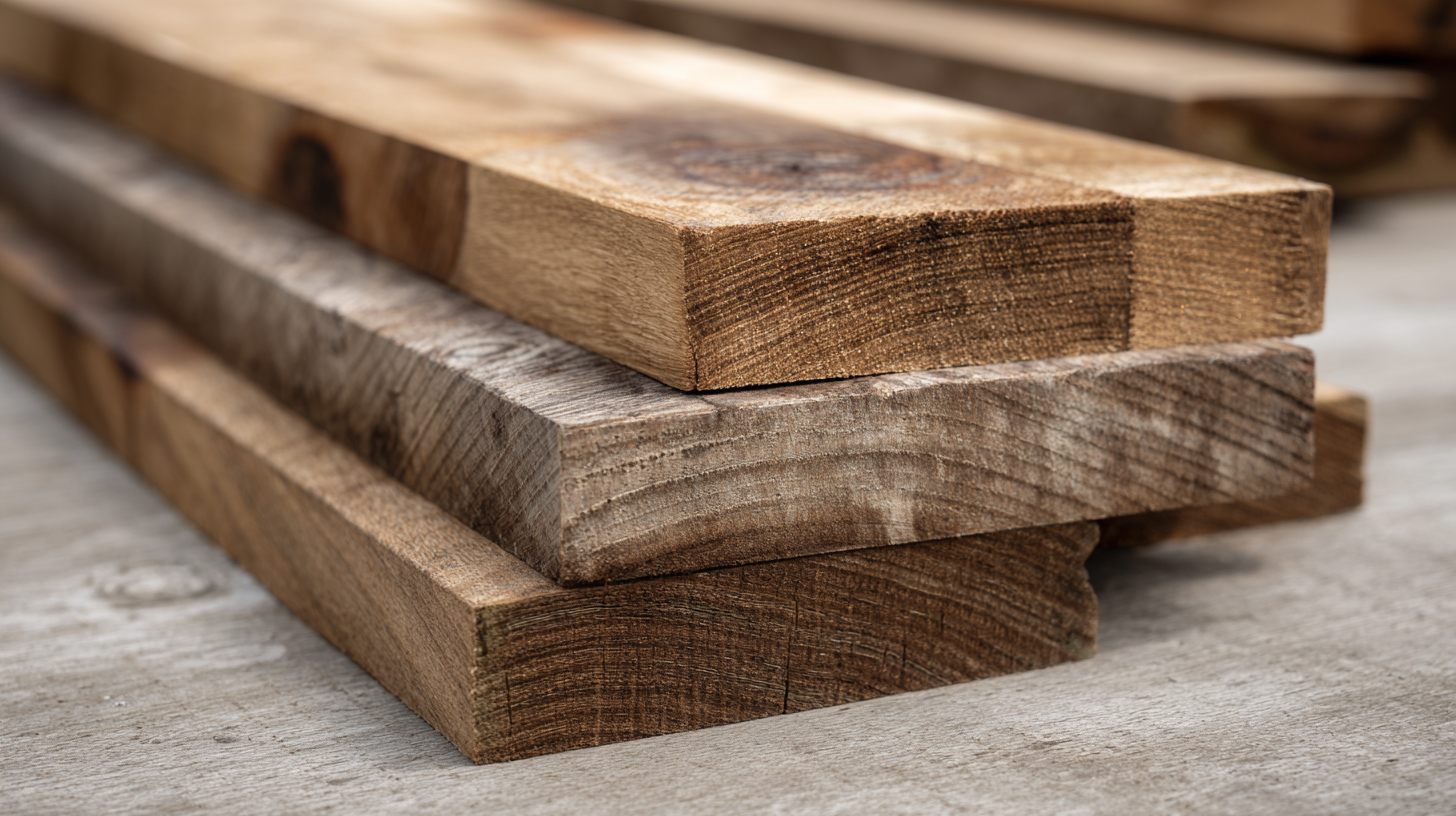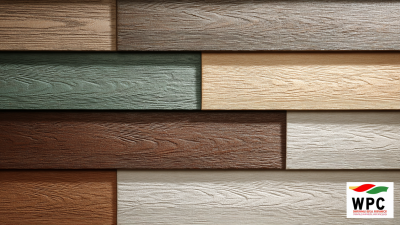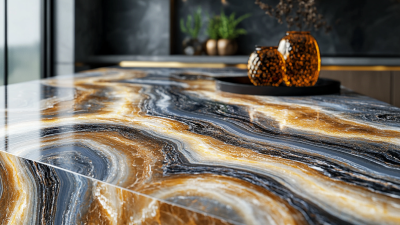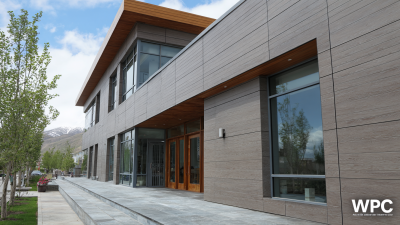Shandong Xiangying New Materials Technology Co., Ltd.
Shandong Xiangying New Materials Technology Co., Ltd.
 As the demand for sustainable building materials grows, WPC board emerges as a groundbreaking alternative to traditional wood solutions, particularly in outdoor applications. With a remarkable durability that exceeds wood by up to 50%, WPC board offers longevity that aligns with environmental considerations.
According to a report by the Freedonia Group, the global market for wood-plastic composites is projected to reach $7.6 billion by 2024, driven by increasing awareness of eco-friendly materials among consumers and significant advancements in manufacturing technologies.
This innovative composite material not only minimizes environmental impacts by reducing reliance on solid wood, but it also boasts resistance to moisture, rot, and insects, making it a versatile option for decking, fencing, and outdoor furniture.
This article explores how to effectively harness the benefits of WPC board, ensuring that both builders and consumers can make informed decisions that favor sustainability without sacrificing performance.
As the demand for sustainable building materials grows, WPC board emerges as a groundbreaking alternative to traditional wood solutions, particularly in outdoor applications. With a remarkable durability that exceeds wood by up to 50%, WPC board offers longevity that aligns with environmental considerations.
According to a report by the Freedonia Group, the global market for wood-plastic composites is projected to reach $7.6 billion by 2024, driven by increasing awareness of eco-friendly materials among consumers and significant advancements in manufacturing technologies.
This innovative composite material not only minimizes environmental impacts by reducing reliance on solid wood, but it also boasts resistance to moisture, rot, and insects, making it a versatile option for decking, fencing, and outdoor furniture.
This article explores how to effectively harness the benefits of WPC board, ensuring that both builders and consumers can make informed decisions that favor sustainability without sacrificing performance.
WPC (Wood Plastic Composite) boards are gaining attention as an innovative solution in sustainable construction. These boards are crafted from a blend of recycled wood fibers and plastic, making them not only eco-friendly but also highly durable. One of the standout benefits of WPC boards is their resistance to rot, moisture, and insects, which adds value to outdoor applications; they can maintain their aesthetic appeal and structural integrity longer than traditional wood. This durability ensures a longer lifecycle, contributing to reduced waste and resource consumption.
Another significant benefit of WPC boards is their versatility. They can be utilized in a variety of applications, from decking and fencing to outdoor furniture and cladding. Their ability to mimic the natural look of wood while incorporating recycled materials makes them an attractive option for architects and builders seeking to minimize their environmental impact. Moreover, WPC boards can be produced in various colors and finishes, providing designers with creative freedom while adhering to sustainable practices. This combination of aesthetics, durability, and environmental consciousness positions WPC boards as a preferred choice for modern, eco-friendly construction projects.
| Dimension | Description | Benefit | Sustainability Factor |
|---|---|---|---|
| Durability | 50% more durable than traditional wood | Longer lifespan, reduced replacement costs | Utilizes recycled materials, reducing waste |
| Moisture Resistance | Resistant to rot, mold, and mildew | Ideal for outdoor applications | Lower environmental impact through reduced chemical treatments |
| Maintenance | Requires minimal upkeep compared to wood | Saves time and costs in maintenance | Promotes sustainable living through less resource use |
| Aesthetic Variety | Available in various colors and textures | Enhances design options for builders/owners | Reduced need for synthetic finishes |
| Recyclability | Can be recycled at the end of its life | Supports a circular economy model | Contributes to environmental conservation |
When it comes to outdoor applications, the durability of building materials is paramount. Traditional wood has long been favored for its aesthetic appeal and structural integrity; however, it is susceptible to weather elements, termites, and decay over time. In contrast, WPC (Wood-Plastic Composite) boards offer a transformative solution. Comprising a blend of recycled wood fibers and plastic, WPC boards exhibit significantly enhanced resistance to moisture, UV rays, and temperature fluctuations. Studies reveal that WPC boards can endure harsher conditions with up to 50% more durability than conventional wood, making them an ideal choice for decks, fences, and outdoor furniture.
The durability comparison between WPC boards and traditional wood highlights not just longevity but also sustainability. While traditional wood requires regular treatments and replacements, WPC boards maintain their integrity without the need for constant upkeep. This not only saves time and resources but also reduces the demand for lumber, promoting environmental conservation. As consumers increasingly prioritize eco-friendly options, WPC boards stand out as a durable and sustainable alternative to wood, redefining how we approach outdoor construction and landscaping.
WPC boards, or Wood-Plastic Composites, represent a remarkable shift in outdoor materials, particularly when considering their cost-effectiveness. Unlike traditional wood, which often requires frequent maintenance and early replacement due to weathering and pest damage, WPC boards provide a durable solution that can withstand the elements. Their unique composition not only enhances durability—boasting up to 50% more resilience than wood—but also minimizes the ongoing costs associated with maintenance, offering substantial long-term savings for homeowners and builders alike.
These boards require minimal upkeep compared to their wooden counterparts. For instance, while wood may need regular painting, sealing, or staining to preserve its beauty and structural integrity, WPC boards are largely resistant to rotting and warping. This results in reduced maintenance costs over time, making WPC a versatile option for outdoor decks, fences, and furniture. In addition, their longevity decreases the need for frequent replacements, further enhancing their cost-effective nature and contributing to a more sustainable choice for environmentally conscious consumers. As the initial investment in WPC boards is offset by lower long-term expenses, they emerge as an attractive alternative to traditional wood in various outdoor applications.
WPC boards, or Wood Plastic Composites, offer a sustainable alternative to traditional wood products while significantly reducing the environmental impact associated with lumber production. According to the research published by the American Forestry and Paper Association, over 3 billion trees are cut down annually, leading to severe deforestation and a substantial increase in carbon footprints. WPC boards, manufactured using recycled wood fibers and plastics, can significantly mitigate these issues, offering an environmentally friendly option that not only helps preserve forests but also utilizes waste materials effectively.
Moreover, studies have shown that by switching to WPC boards, companies can reduce greenhouse gas emissions by up to 30%. The sustainable production process of WPC boards requires less energy compared to traditional lumber, which translates to lower carbon emissions throughout their lifecycle. By choosing WPC products, consumers can make a positive impact on the environment, helping to combat climate change and promote a greener future.

Wood Plastic Composite (WPC) boards have emerged as a leading alternative to traditional wood, particularly in landscaping and outdoor furniture applications. According to a report by Grand View Research, the WPC market is expected to reach USD 9.47 billion by 2025, driven largely by the increasing demand for sustainable materials in outdoor design. WPC boards offer a variety of benefits, including resistance to weather, insects, and decay, making them a superior choice for outdoor environments. Their composite nature ensures that they retain the natural look of wood while providing enhanced durability—up to 50% more than standard timber.

The versatility of WPC boards extends to numerous landscaping features. They can be employed in creating aesthetically pleasing decks, walkways, and garden furniture that withstand the rigors of outdoor use. As noted in a study by MarketsandMarkets, the landscaping segment is projected to witness significant growth, fueled by the rise in eco-conscious consumer preferences. Furthermore, their low maintenance requirements and longevity make WPC an ideal choice for businesses and homeowners looking to minimize upkeep costs while still achieving a stylish outdoor space. Whether used in seating, planters, or decorative elements, WPC boards blend functionality with environmental responsibility, paving the way for innovative outdoor applications.






